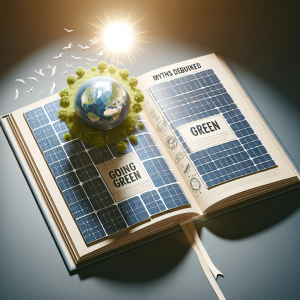Achieving complete energy independence off-grid requires a strategic blend of sustainable practices, technological investments, and mindful consumption. The foundation of energy independence lies in understanding your energy needs and adjusting your lifestyle and technology to meet these requirements sustainably. Begin with a thorough assessment of your energy consumption. Create a detailed inventory of all electrical appliances, determine their power requirements, and consider energy-saving alternatives and practices. Simplifying your lifestyle by reducing unnecessary energy consumption can significantly lower the amount of energy you need to generate.
Invest in renewable energy systems, the backbone of off-grid living. Solar power is the most popular and accessible solution. Opt for high-efficiency solar panels and consider the geographical location to maximize sunlight exposure. Calculating your energy needs will determine the capacity of the solar energy system required. Explore solar tracker systems which adjust the panels throughout the day to follow the sun, thereby increasing efficiency. Systems with adequate battery storage ensure energy availability during low sunlight periods. Modern lithium-ion batteries are reliable and have longer lifespans, though more expensive upfront, providing a worthwhile investment for long-term energy autonomy.
Wind power offers an excellent complement to solar energy, especially effective in areas with high average wind speeds. A small wind turbine can significantly contribute to powering your home, particularly during seasons with less sunlight. Careful selection of the turbine size and type based on local wind speeds and installation space is crucial for efficiency. Small hydroelectric systems provide an alternative if you have access to flowing water. Micro-hydropower systems can offer a consistent electricity supply, sometimes more dependable than wind or solar, as water flow can be more reliable in specific regions and seasons.
Energy storage remains critical in managing self-generated electricity. Advanced home battery systems are important for storing excess energy generated during peak production times. Consider hybrid inverters that allow seamless integration of solar, wind, or hydro systems, offering flexibility in energy management. Smart inverters optimize energy use and storage, adapting to your household’s needs and enhancing efficiency. Ensure your backup systems are robust; generators, although reliant on fuel, can serve as emergency power sources during prolonged periods of insufficient natural energy production.
Energy-efficient appliances and devices form the cornerstone of reducing consumption. Prioritize energy-star-rated appliances, which consume significantly less power than traditional counterparts. Implementing LED lighting, smart thermostats, and advanced insulation techniques minimizes energy waste. Adopt wireless monitoring systems that allow real-time access to energy consumption data, helping you adjust usage patterns. Simple measures like unplugging devices when not in use and utilizing natural light and ventilation go a long way in preserving energy reserves.
Water heating is a major energy sink, thus re-evaluating traditional water heating methods is essential. Solar thermal systems offer an efficient alternative, using solar collectors to absorb heat, significantly reducing electricity or gas usage. Heat pump water heaters are highly efficient, using minimal electricity to transfer heat rather than generate it. Positioning water tanks to utilize gravity for water distribution diminishes the requirement for energy-demanding pumps.
Innovative approaches, such as passive solar design, integrate architectural elements to capitalize on natural heating and cooling, reducing the need for additional energy consumption. Strategic placement of windows, reflective roofing, and thermal mass floors maximize energy efficiency. Emphasize building materials that provide natural insulation, reducing the dependency on artificial heating and cooling systems.
Incorporating biomass systems presents an opportunity for diversified energy production. Biogas digesters convert organic waste into usable fuel, beneficial for areas with agricultural activities or ample organic waste. Producing biogas not only generates energy but also contributes to waste reduction and soil enrichment through byproducts. Wood stoves offer a traditional, yet effective, method of heating in regions with abundant wood resources, provided sustainable wood harvesting practices are observed.
Regular maintenance of all systems ensures longevity and optimal performance. Schedule routine checks and professional inspections of solar panels, turbines, and other equipment. Educate yourself on basic troubleshooting and repair skills to manage minor issues and avoid costly professional interventions.
Finally, a community-centric approach amplifies individual efforts towards achieving energy independence. Engaging with local energy cooperatives or renewable energy groups fosters knowledge exchange and resource sharing. Collaborate with like-minded individuals to invest in shared renewable energy projects, reducing individual costs and enhancing energy generation capacity.
Navigating off-grid energy independence requires a comprehensive approach that integrates technology, sustainable practices, and smart consumption. It demands continuous learning and adaptation, aligning with advancing technologies and changing environmental conditions. By implementing these strategies effectively, you will establish a robust, self-sufficient energy system that aligns with your goals and lifestyle.


